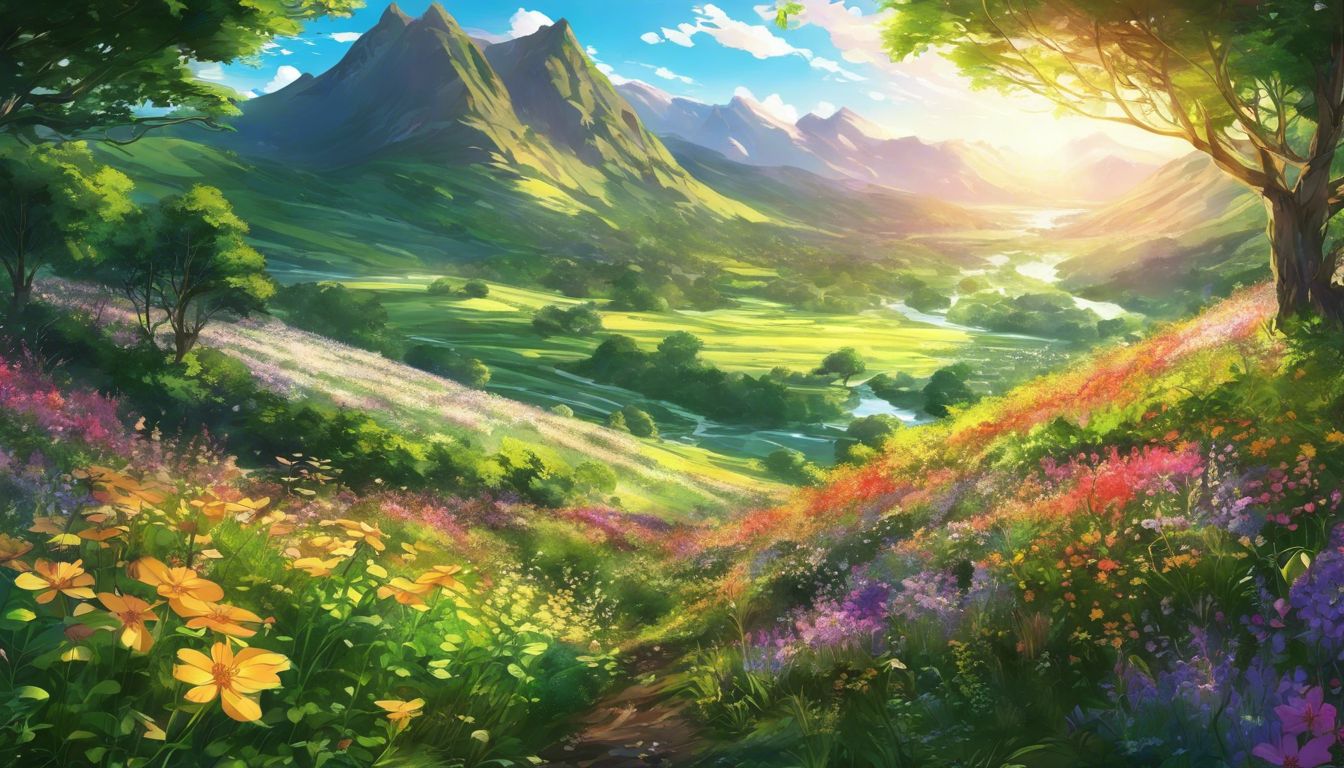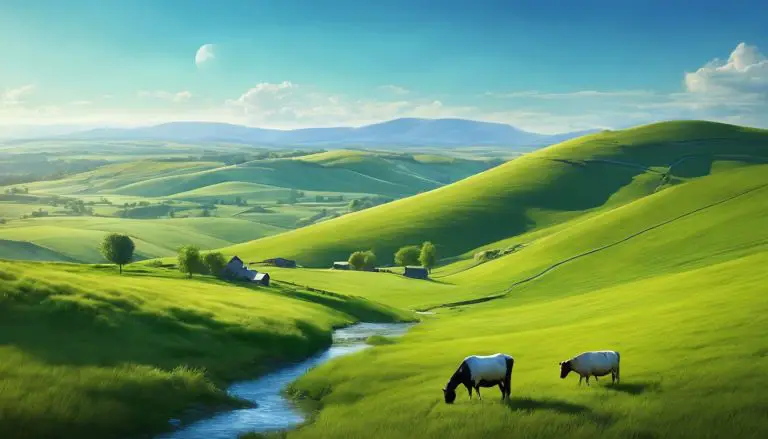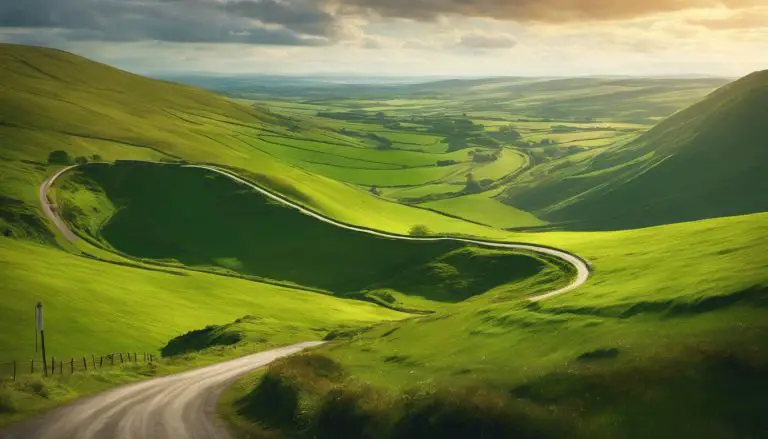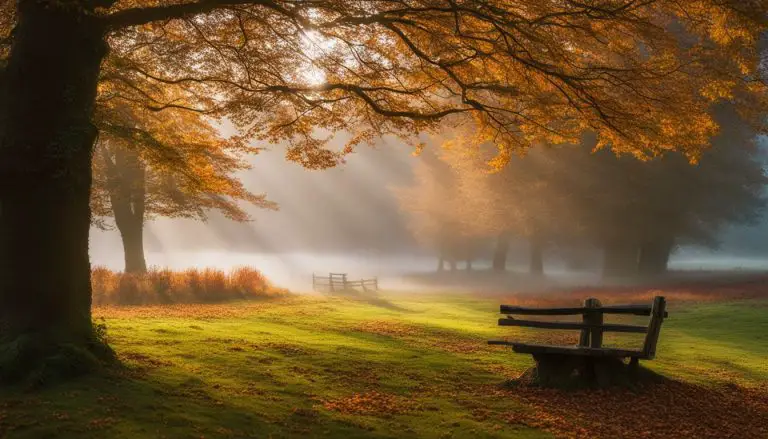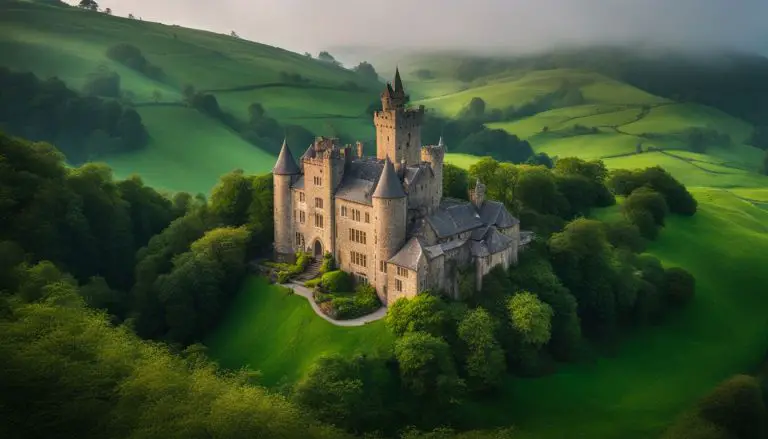Exploring the Beauty of Native Irish Plants and Flowers
Have you ever wandered through Ireland’s lush landscapes, feeling a sense of wonder amidst the verdant fields yet struggling to pick out its unique floral beauties? It’s a common challenge for nature enthusiasts; parsing through clovers and wild grasses in search of those elusive blooms.
But fear not, with Ireland being home to over 800 native plant species, including the charming cowslip, our guide is like a trusty compass pointing you towards the island’s botanical jewels.
So prepare yourself for an adventure that goes well beyond the iconic shamrock—there’s a whole spectrum of Irish flowers waiting to be celebrated!
Key Takeaways
- Ireland has over 800 native plant species, including unique flowers like cowslip and the famous shamrock, which is a symbol of Irish culture.
- Native Irish flowers such as buttercups, bluebells, and hawthorn are not only beautiful but also play vital roles for pollinators like bees.
- Shamrocks have deep historical roots in Ireland; St. Patrick used them to explain Christianity in the 5th century, and they remain an emblem of luck and Irish identity today.
- The Elder Tree is significant in Irish folklore and medicine; its flowers turn into berries that can be made into wine or syrups for health remedies once cooked to remove toxins.
- Making a bouquet with native Irish wildflowers involves choosing diverse blooms for color balance, including fragrant ones for scent, and adding foliage like stinging nettle leaves for depth.
Irish Flowers: A Symbol of Irish Beauty
The shamrock, a well-known symbol of Ireland, has a rich history and cultural significance. Today, these Irish flowers are still widely used in ceremonies and as floral tributes.
The History of the Shamrock
Shamrocks have been part of Irish history for a long time. Legends say St. Patrick, Ireland’s patron saint, used the shamrock in the 5th century to explain the Holy Trinity to the Irish people.
He chose this little plant because it has three leaves just like the Father, Son, and Holy Spirit in Christian beliefs. Shamrocks soon became a symbol of Ireland and its culture.
People wear them on St. Patrick’s Day to show their Irish pride. This tradition keeps going strong even today. Farmers believed that growing shamrocks would keep snakes away from their homes and fields.
Whether or not snakes were around, shamrocks thrived across Ireland’s lush landscapes.
Irish soldiers wore them as a sign of rebellion against English rule during the 17th and 18th centuries. The wearing of the shamrock became more than just a religious symbol; it was about freedom too.
Over time, poets sang about them, writers praised them in stories, and artists painted them into scenes of Irish life.
The Shamrock Today
The Shamrock continues to be a cherished symbol of Ireland, representing luck and national pride. People wear it proudly on St. Patrick’s Day, celebrating their Irish heritage. Additionally, the Shamrock is still used in various traditions and ceremonies across the country.
Its significance has not faded over time, making it a timeless emblem of Irish culture.
Shamrocks are not just decorative; they hold historical and cultural importance for many people in Ireland today. They are part of the vibrant tapestry that makes up the rich flora of this beautiful country.
Importance of Irish Funeral Flowers
Irish funeral flowers hold deep cultural significance in Ireland, symbolizing respect and honor for the departed. They serve as a poignant tribute to celebrate the life of the deceased and offer comfort to grieving families.
The traditional choice of flowers like lilies, roses, and carnations reflects the profound connection with nature and expresses love, sympathy, and remembrance during this somber time.
These beautiful blooms are an essential part of Irish mourning customs, fostering a sense of peace and reverence amidst sorrow.
Irish Flowers and Bees
Moving on to another fascinating aspect of Irish flora, let’s delve into the relationship between Irish flowers and bees. The lush landscapes of Ireland not only showcase a varied array of native wildflowers but also support a thriving population of bees.
These hardworking pollinators play a crucial role in maintaining the delicate balance of the ecosystem, ensuring the continued growth and beauty of Irish floral species.
As one explores the enchanting world of indigenous Irish plants, it becomes evident that these incredible floral varieties are not only breathtaking to behold but also provide essential sustenance for the buzzing inhabitants of Ireland.
Native Irish Flowers
From the vibrant yellow of buttercups to the delicate blue of bluebells, native Irish flowers showcase the natural beauty of Ireland’s landscape. To discover more about these stunning flora, keep on reading!
Buttercups
Ireland is home to beautiful native buttercups, adding bright pops of color to its landscape. These cheerful flowers are part of the Ranunculus family and have glossy yellow petals that catch the eye.
Buttercups bloom in meadows and along roadsides, making them a delightful sight while exploring Ireland’s countryside. Their radiant hue provides a stunning contrast against the lush green grass and other wildflowers, creating picturesque scenes for nature enthusiasts.
Buttercups also play an essential role in supporting local wildlife. Their nectar attracts bees and butterflies, contributing to the overall biodiversity of Ireland’s flora and fauna.
Bluebells
Bluebells are a charming sight in the woodlands of Ireland, adding a touch of magic to the landscape. These native flowers bloom from April to June, creating carpets of blue that enchant all who encounter them.
You can find these delicate flowers in abundance in ancient woodlands and shady areas across the country, offering a stunning display for nature enthusiasts to admire.
The captivating beauty of bluebells isn’t just for aesthetics – they also play an essential role in providing food for bees and other pollinators. As you explore the native Irish flora, keep an eye out for these enchanting blooms that add vibrancy and wonder to Ireland’s natural beauty.
Hawthorn Flowers
Hawthorn flowers, also known as Mayflowers, are a common sight in the Irish countryside during the spring and early summer months. These delicate white blooms decorate the hedges and bring a sense of enchantment to the landscape.
They hold special significance in Irish folklore, symbolizing love and protection. The hawthorn tree itself has been woven into many Irish traditions and superstitions, making it an intriguing part of Ireland’s botanical beauty.
The sight of hawthorn flowers blossoming across the Irish countryside adds a touch of magic to any traveler’s journey. Moving on to our next stop – “Stinging Nettle”.
Stinging Nettle
Stinging Nettle, a vibrant green plant with jagged leaves, is native to Ireland. It’s known for its tiny stinging hairs that can irritate the skin upon contact. Despite this, it has been used traditionally in Irish cuisine and herbal remedies due to its high nutritional value and health benefits.
The plant is abundant in the country and can be found growing along hedgerows, in woodlands, and near waterways.
Its rich history as a traditional medicinal herb adds an interesting layer to exploring the flora of Ireland. Stinging Nettle has been utilized for centuries for its anti-inflammatory properties and as a source of vitamins A and C.
Spear Thistle
The Spear Thistle, also known as Cirsium vulgare, is a striking wildflower found in Ireland’s meadows, pastures, and disturbed areas. This tall plant with spiny leaves and purple-pink flowerheads blooms from June to September.
Its nectar-rich flowers attract bees and butterflies, contributing to the biodiversity of Irish flora. The Spear Thistle thrives in well-drained soil under full sun or partial shade and is an essential part of the country’s natural vegetation.
The Spear Thistle’s distinctive appearance makes it a noteworthy addition to Ireland’s wildflower landscape. Its vibrant bloom and ecological significance offer travelers a chance to appreciate the diverse botanical beauty of this enchanting land.
Other Notable Irish Flowers
The Foxglove, Daisy, Watercress, Elder Tree, and White Clover are just a few of the other beautiful Irish flowers waiting to be explored. Join me as we discover the diverse and stunning native plants of Ireland.
Foxglove
Foxglove, a striking plant with bell-shaped flowers, is one of the notable Irish flowers. It blooms from late spring to early summer and can be found in woodland areas across Ireland.
The foxglove’s vibrant hues make it a visually captivating addition to the natural Irish landscape. This biennial flower not only adds beauty but also holds a place in traditional medicine due to its digitalis content, which has cardiac-regulating properties.
The foxglove, while enchanting to look at, should be admired from a distance as all parts of the plant are toxic if ingested. Its presence among the native Irish flora brings an air of mystery and allure to any exploration of the country’s botanical offerings.
Daisy
Moving from the enchanting beauty of Foxglove to the delicate charm of daisies, Ireland’s native flora is a captivating display. The daisy, also known as “bainne bó bleachtáin” in Irish, is a perennial flower that dots the countryside with its vibrant yellow and white hues.
These cheerful flowers grow abundantly in meadows and grassy areas throughout Ireland, adding a delightful touch to the landscape. Daisies symbolize purity and innocence and are often used in Celtic floral designs and bouquets.
Daisies have long been admired for their simplicity and elegance, making them a beloved part of Ireland’s natural tapestry. They play a vital role in supporting local ecosystems by providing nectar for bees and other pollinators.
Watercress
Watercress is a nutritious and tasty aquatic plant found in Ireland. It grows in streams and shallow running water, making it easily accessible to foragers. Packed with vitamins and minerals like iron and calcium, it’s not only healthy but also delicious when added to salads or sandwiches.
This peppery green is a unique addition to Irish cuisine and offers travelers a chance to taste the fresh flavors of the native flora.
Elder Tree
The Elder Tree is a native Irish plant that holds both cultural and medicinal significance. Its delicate white flowers bloom in late spring, attracting bees and butterflies with their sweet fragrance.
The tree’s purple-black berries are used to make elderberry wine, jam, and syrup, and have been traditionally used for various health remedies due to their high antioxidant content.
The Elder Tree also plays a role in folklore and superstitions, being associated with protection against evil spirits. So keep an eye out for the Elder Tree when exploring Ireland’s natural beauty – you might just stumble upon its enchanting presence along your journey through the lush landscape.
The delicate white flowers of the Elder Tree bloom in late spring during May or June before maturing into clusters of deep purple berries by early autumn. These little-known fruits can be made into jams, cordials, liqueurs, chutneys — even pies! Despite being poisonous when unripe or raw due to containing cyanide-inducing glycosides, cooking eliminates this danger while highlighting delicious flavors often described as mildly aromatic with hints of figs or raisins infused by tartness.
White Clover
Moving from the enchanting Elder Tree, let’s talk about White Clover. This delicate and ubiquitous Irish flower is not only visually stunning but also holds a significant place in the country’s ecosystem.
With its white spherical blooms blanketing fields and meadows, it adds to Ireland’s natural beauty and provides essential sustenance for bees and butterflies. As travelers exploring the wildflowers of Ireland, keep an eye out for these charming clovers which contribute to the country’s rich floral diversity.
White clover is among the indigenous Irish flowers that play a crucial role in supporting local wildlife, making every encounter with this emblematic bloom a delightful experience.
Essential Information for Exploring Irish Flowers and Plants
Discover the National Flower of Ireland, learn about native Irish wildflowers and their symbolism, find out where to find shamrocks in the wild, get tips for making a bouquet with Irish flowers, and more.
Let’s explore the beauty of native Irish plants and flowers!
The National Flower of Ireland
The National Flower of Ireland is the shamrock, a small three-leafed plant that symbolizes Irish culture and heritage. It has been an iconic emblem for centuries, representing luck, faith, and the Holy Trinity.
The shamrock holds a special place in Irish tradition and is widely recognized as a national symbol. In addition to its cultural significance, it also adds vibrant greenery to the landscape, making it an essential part of Ireland’s natural beauty.
Moving on from the national flower of Ireland – let’s explore the list of native Irish wildflowers which add diversity to this stunning floral landscape.
List of Native Irish Wildflowers
Ireland is home to a diverse range of native wildflowers, adding vibrant colors to its green landscape and providing a captivating floral experience. Here are some of the enchanting native Irish wildflowers:
- Heather: With its mesmerizing purple blooms, heather thrives in the Irish landscape, especially in moorlands and heathlands.
- Harebell: Delicate and charming, harebells adorn the countryside with their bell-shaped blue flowers, creating picturesque scenes.
- Ragged Robin: This striking pink wildflower adds a pop of color to wetlands and marshy areas, attracting bees and butterflies.
- Cowslip: Known for its clusters of yellow, fragrant flowers, cowslips brighten up grasslands and meadows across Ireland.
- Primrose: These dainty pale yellow flowers bloom in early spring, signaling the arrival of warmer seasons and can be found nestled among hedgerows and woodlands.
Popular Irish Flowers and Their Symbolism
As we delve deeper into the enchanting floral landscape of Ireland, we uncover not only a variety of colors and scents but also profound cultural significance. Each bloom tells a story, steeped in history and symbolism that resonates with the Irish people. Here are some popular Irish flowers and the meanings they carry:
| Flower | Symbolism |
|---|---|
| Shamrock | National emblem, symbol of luck and St. Patrick’s teachings |
| Heather | Purple heather represents admiration and beauty, while white heather is believed to bring good luck |
| Shelagh’s Flowers (Harebell) | Associated with gratitude, humility, and constancy |
| Ragged Robin | Symbolizes wit; a flower often found in old Irish poetry and folklore |
| Cowslip | Signifies youth, beauty, and the joys of spring |
| Heather (Calluna vulgaris) | White heather is a symbol of protection and good fortune |
| Watercress | Represents healing and a purifying symbol, due to its cleansing properties |
| Elder Tree Flowers | Denotes protection and is thought to ward off evil spirits |
| White Clover | Associated with good luck, especially when found with four leaves |
These blooms contribute to a beautiful and symbolically rich floral mosaic. They’re more than just a delight to the eye; they hold stories and traditions that have been cherished for generations. Whether you’re walking through the countryside or arranging a native bouquet, these flowers will surely add a touch of Irish charm to your experience.
Where to Find Shamrocks in the Wild
When exploring the wilds of Ireland, keep an eye out for shamrocks in damp, shaded spots like woodland edges and hedgerows. These iconic three-leaf clovers favor moist soils and thrive in areas with partial shade, making them perfect to find on your nature walks or hikes through the countryside.
Shamrocks often grow among grassy patches or near water sources, so be sure to scan these areas for a glimpse of this traditional Irish symbol. Don’t forget that shamrocks can also be found in gardens or parks where they’re intentionally cultivated – their distinctive foliage adds a touch of charm to any green space.
Tips for Making a Bouquet with Irish Flowers
Creating a captivating bouquet with native Irish flowers is a delightful way to celebrate the beauty of Ireland’s flora. Here are some essential tips for crafting your own stunning bouquet:
- Select a variety of native Irish wildflowers, such as bluebells, buttercups, and elder tree blossoms, to capture the diverse beauty of the Irish landscape.
- Incorporate traditional Irish flowers like shamrocks and white clover for a touch of cultural significance and symbolism in your bouquet.
- Balance the colors and textures of the flowers to create an aesthetically pleasing arrangement that reflects the natural charm of Ireland’s botanical diversity.
- Consider adding fragrant blooms like hawthorn flowers or foxglove to infuse your bouquet with the enchanting scents of Irish flora.
- Use foliage such as stinging nettle leaves or watercress to add depth and contrast to your bouquet, representing the lush greenery synonymous with Ireland.
Conclusion
In conclusion, the native Irish plants and flowers offer a captivating glimpse into the natural beauty of Ireland. Discovering and appreciating these botanical wonders can inspire creativity and connection with nature.
Their practicality makes it easy for travelers to explore the diverse floral landscape while understanding their cultural significance. Have you considered creating your own Celtic-inspired floral designs using native Irish flowers? Take this opportunity to embrace the enchanting world of Irish flora and create lasting memories amidst its blooming beauty.
